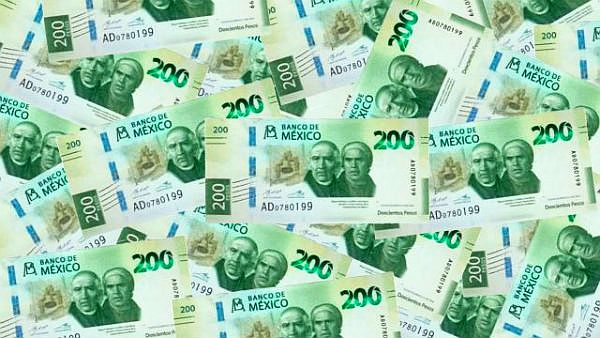Even as some emerging-market peers ramp up interest rates amid resurgent global inflation, Mexico is vying to regain its crown as the king of carry.
While policy makers in Mexico have lagged behind their counterparts in Brazil, Russia and Turkey in raising borrowing costs, the peso remains attractive because of its stability, a major demand of any investor eking out small returns by borrowing in one currency and lending in another.
One-month implied volatility on the peso fell to its lowest since February 2020 this week, putting it in prime position to benefit from any return to risk-on sentiment following the recent selloff triggered by the spread of the delta variant. In fact, the peso is already reaping benefits, losing just 1.1% against the dollar in the past month, while the Brazilian real, Peruvian sol and Chilean peso each dropped 3.4% or more. The Mexican peso dropped 1.2% on Friday amid a rising dollar.
Some analysts, like Wells Fargo’s Brendan McKenna, are bracing for a rally.
“Once delta-related volatility subsides and conditions calm down, the carry trade could start to become popular again and the peso could be a beneficiary,” McKenna said, adding that the peso is among his top EM picks this year. “It may take a few months for the rally to materialize, but we think eventually we will get a nice MXN run to close the year.”
The swaps market is pricing in an additional 75 basis points in rate increases by the end of the year in Mexico, fueling any potential gains in the peso.
Lagging Behind
The Mexican carry trade used to be an obvious bet with a hawkish central bank keeping rates above their peers to defend the peso and maintain a lid on inflation. That all changed this year.
While Mexico has raised rates by half a percentage point to 4.5%, Brazil has increased borrowing costs by 3.25 points to 5.25%. Outside Latin America, Russia has raised its key rate by 2.25 percentage points to 6.50%, while Turkey’s rates have jumped 10.75 points to 19% in the past 12 months.
Now Mexico may claw back some of the lost ground to Turkey, where policy makers are expected to cut rates, even as Russia and Brazil continue to raise borrowing costs. Swaps are only pricing in 50 basis points of hikes in Russia before rates start to fall again.
“The proactive hiking by the central bank will be positive for the peso in the near term,” said Gabriel Tenorio, a strategist at Bank of America in New York. “There’s relatively lower headline risk in Mexican markets right now, now that the midterm elections are behind us and the key people in the economic cabinet have been announced or appointed.”
Turning Dovish
Late 2021 may turn out to be a high point for the Mexican peso though.
Central bank Governor Alejandro Diaz de Leon is set to depart in January to be replaced by former Finance Minister Arturo Herrera — who has repeatedly signaled a move dovish approach. That should be enough to close the window for aggressive rate hikes as the bank’s two rate increases this year were decided in a 3-2 split vote.
For now, Mexico’s prospects are solid. Christian Lawrence, a strategist at Rabobank in New York, says that adjusting for volatility and liquidity, the peso is among the top five carry bets in the world. As fears of the delta variant begin to fade, that could mean strength ahead for Mexico’s currency.
Mexican Markets
Elsewhere in Mexican markets, the nation’s corporate bonds climbed on average, joining gains in dollar-denominated sovereign bonds while peso-denominated government notes slipped. The Finance Ministry announced plans to sell new sovereign bonds called Bondes F, which will be linked to the nation’s one-day interbank TIIE funding rate in an effort to develop the local bond and derivatives markets.
Next week, Mexico watchers will turn their attention to bi-weekly CPI figures for the period ending Aug. 15, after inflation soared to nearly double the central bank’s 3% target. Mexico will also report final second-quarter gross domestic product and June retail sales. June economic activity and July unemployment numbers are also due.
Source: El Financiero
TYT Newsroom


